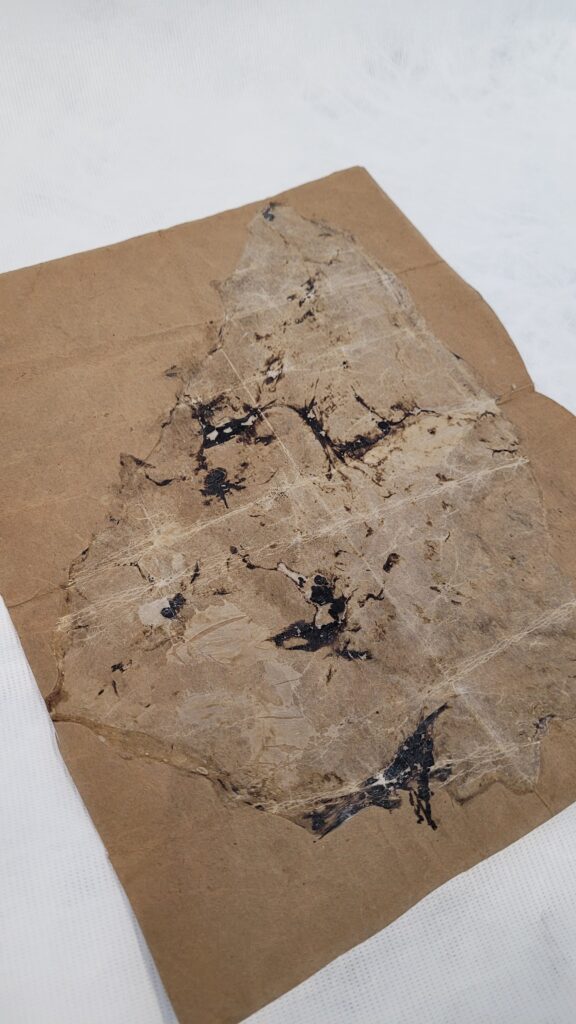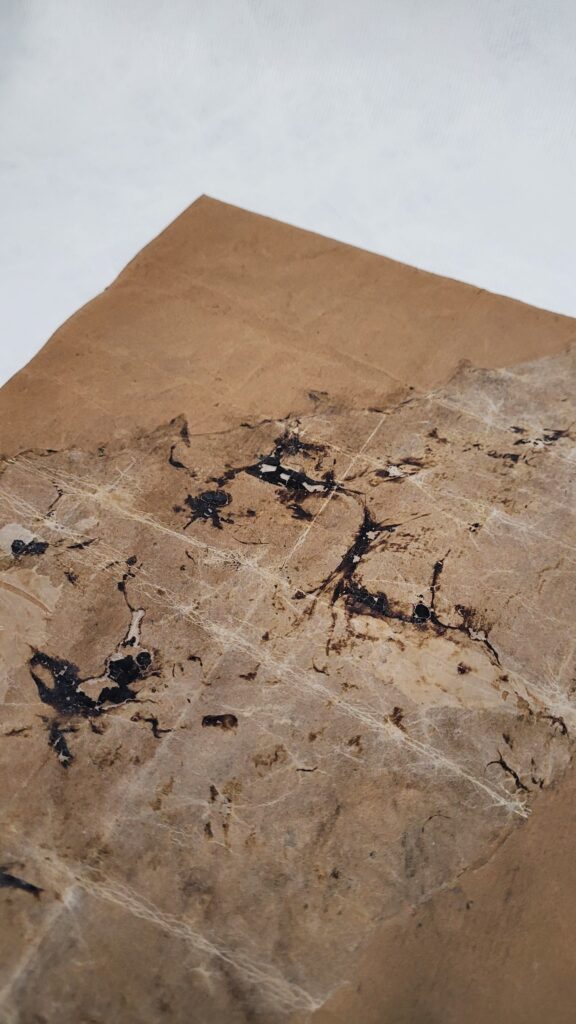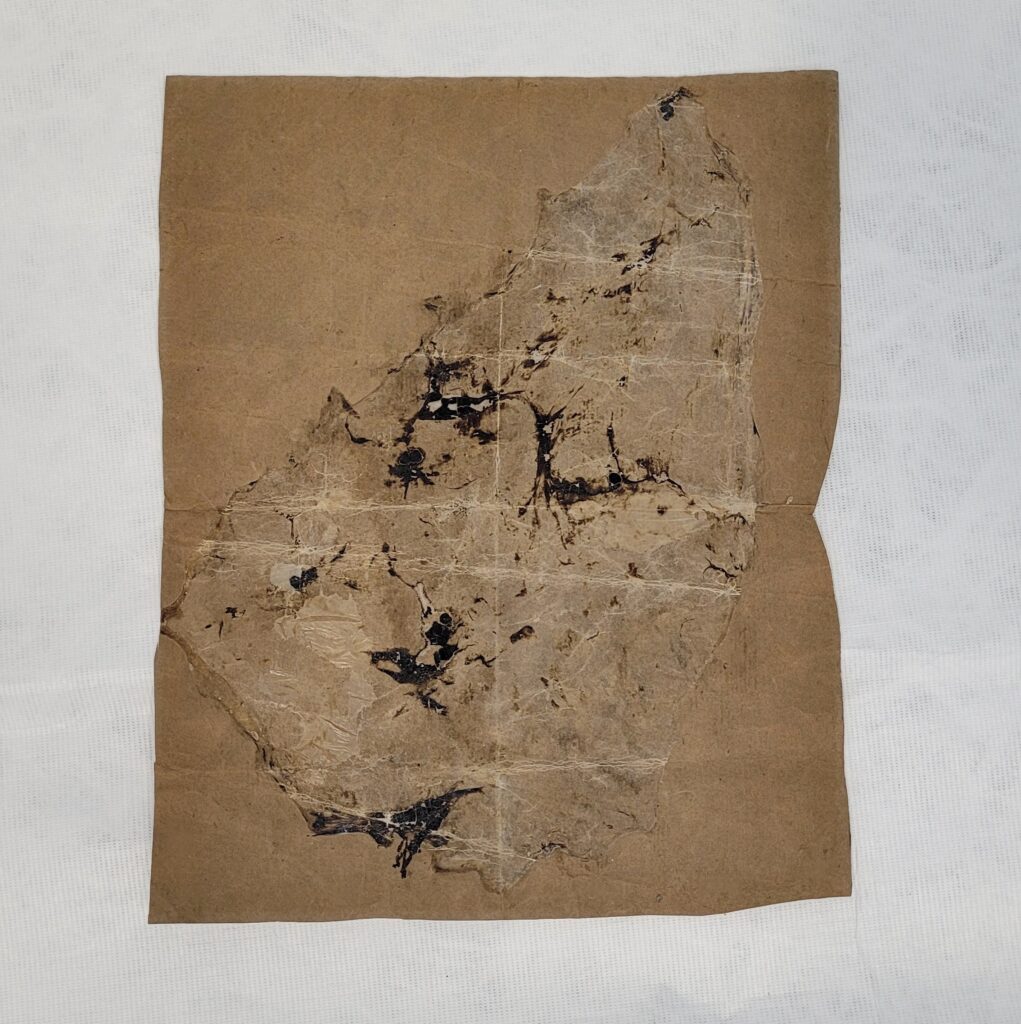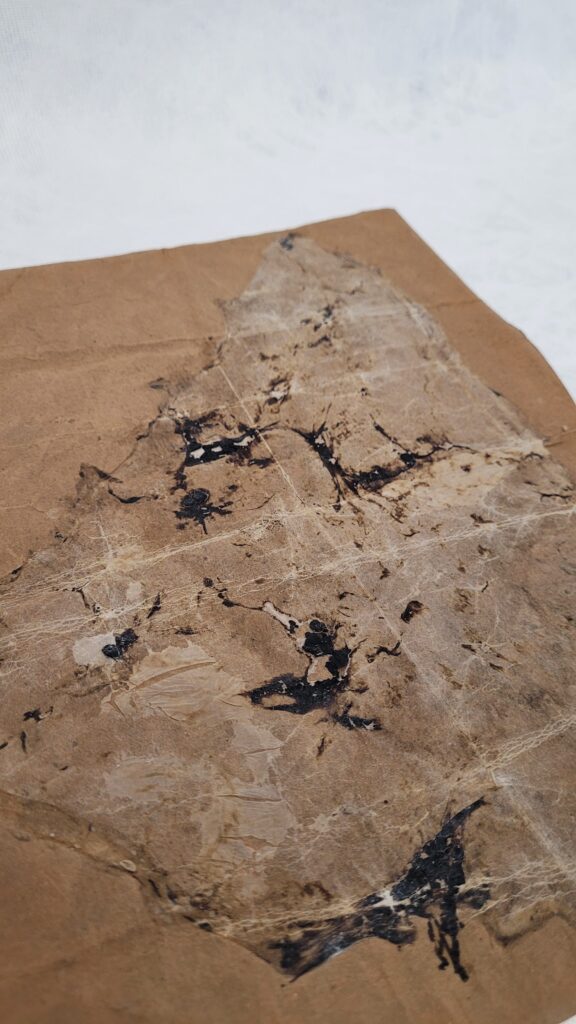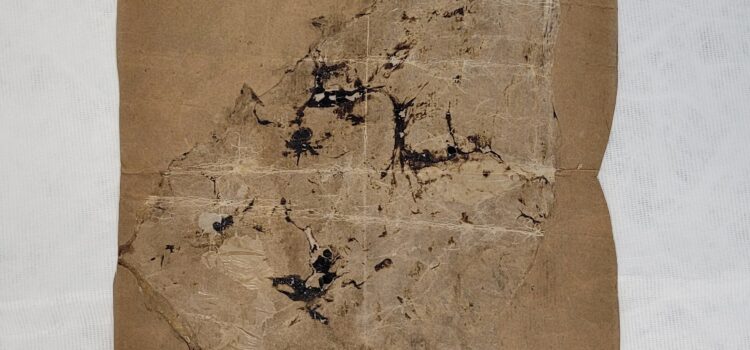Tucked away safe in a box labelled ‘Folklore’ at the Museum of Cambridge is a wooden frame with a piece of brown paper in it. At first glance, you might look at this object and think it’s no more than a stained piece of brown paper. However, when you search for this object within our collections database, you will discover that what you are looking at is, in fact, a caul.
A caul is a piece of membrane that can cover a newborn’s head and face. A baby born with a caul is rare, occurring in less than 1 in 80,000 births. A typical birth custom once observed by East Anglian mothers was that a child born with their head covered by a caul was extra lucky and would never be drowned. It is said that the midwife would rub a sheet of paper across the baby’s head and face, pressing the material of the caul onto the paper. The caul would then be presented to the mother as an heirloom.
Unfortunately, this custom is only true if the caul is kept; otherwise, the luck and immunity of the person born in it will disappear. Due to babies being born less at home and more often in hospitals, if a baby is born with a caul, it is common to be swiftly removed by the attending physician or midwife upon birth.
Cauls were used as charms commonly by sailors, soldiers, or people travelling via the sea. These individuals would pay to loan the caul, hoping that carrying it on their person would protect them from drowning or their boat sinking. If you cast your mind back to the caul mentioned at the beginning, safely tucked away in a box at the Museum, this object has a fascinating story to tell.
The caul came from a Norfolk child born in 1891 and was borrowed by relatives and friends of the family when they were travelling by sea. Not only this but this caul was lent to soldiers going to South Africa to fight in the Boer War. During the First World War, it was again borrowed by soldiers returning home or on leave on several occasions.
It is fascinating to think that this piece of paper, once rubbed against a baby to transfer the caul, has not only been kept as a token of luck since 1891 but has travelled across seas with numerous individuals, giving each one, if anything, a sign of hope that their journey will end safely.
